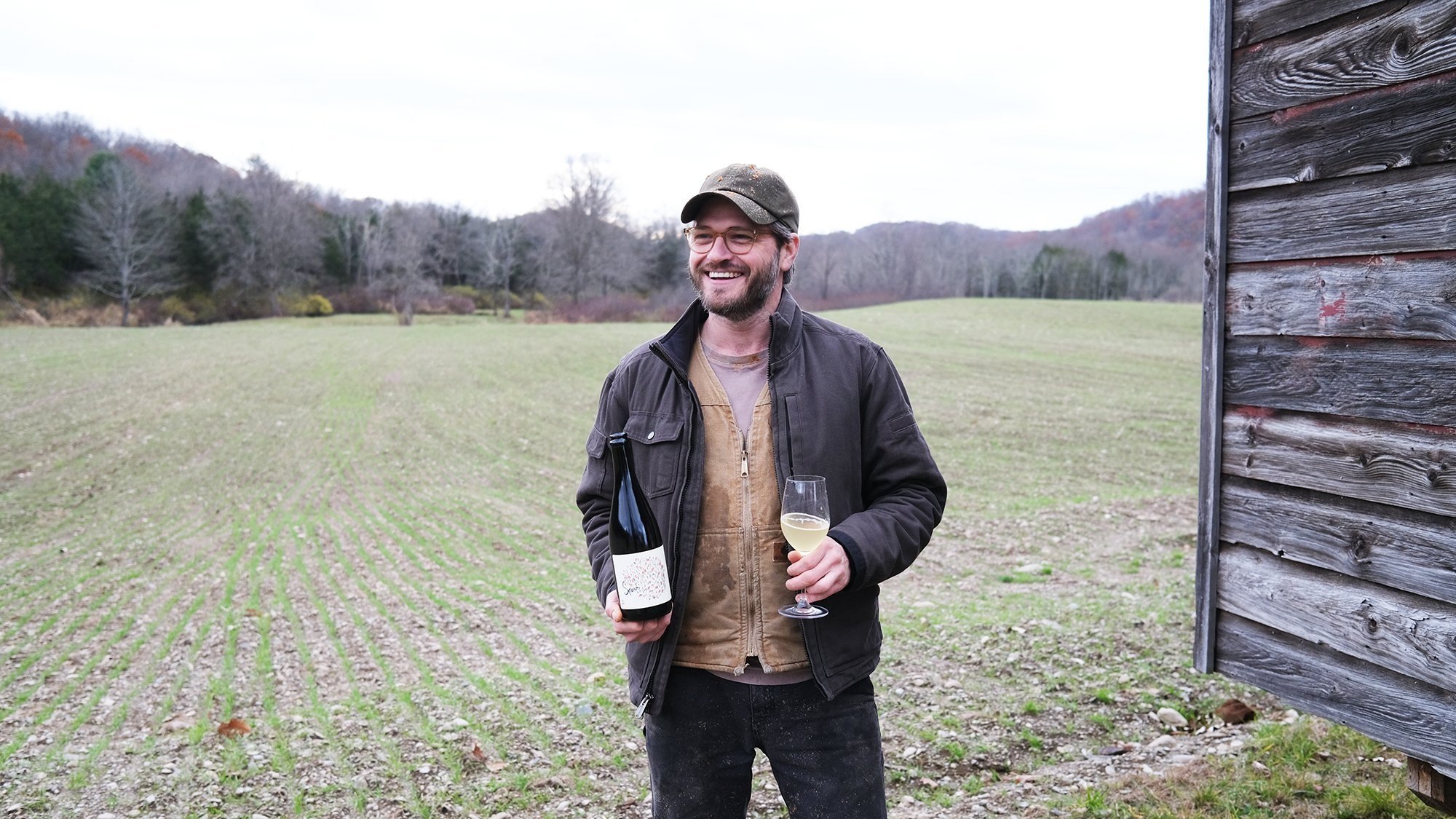
Leif Sundström began making cider as a way to establish his own sense of place within NY’s Hudson Valley. He makes small quantities of cider from a blend of traditional heirloom and cider apples selected to express the delicate differences in variety and terroir of the historic cider-producing regions of New York.
Sundström’s interest in cider did not begin in New York, but really came out of a journey that started in restaurants. Pursuing an interest in music, Sundström first left his native Texas for Portland, Oregon where he served in restaurants between tours and was lucky enough to work at restaurants that would give him an intimate connection to food, agriculture and wine. Eventually Leif would land a gig helping open, manage and run the beverage program at Le Pigeon restaurant. There the connection to fermented fruit deepened fast and Leif would eventually leave to work for Boedecker Cellars in the Willamette Valley. From there Leif moved to New York to continue his path in the wine industry, accepting a job in wine importing managing a portfolio that took him annually to meet with producers and growers in the wine regions of Germany, Austria, and Champagne. Always more interested in making wine than selling it, Leif eventually left the office to get his hands dirty again and accepted an opportunity to make wine under Johannes Leitz in Germany’s Rheingau. It was then that he tasted, for the first time, the simple but honest ciders made from German apples and recognized the incredible potential in these fruits.
Leif did not have an orchard, had not made much cider, and wasn’t drinking near enough cider, but he could see from a distance the potential of a mineral-driven dry cider from the agricultural region back home. At the time, the fledgling American cider scene was small and narrow, the wine scene seemingly hermetic and at times dogmatic. Leif saw an opportunity to develop a beverage that was both approachable and perpetually intriguing, as well as a way to finally put down roots, generate community, and continue to make something with his own hands.
There is no script for the work in the Sundström cellar. Instead, fermentation is often approached as a kind-of improvisation/meditation, that reveals lessons for the cellar and for life. Trust. Patience. Letting go. Being present. The process cannot be rushed, nor slowed down; there is as much meaning in the liminal space as there is in the most delegated work. Sundström’s approach to telling the story of cider in the northeastern U.S. is painterly and conceptual, much like the labels on the front of each bottle. The process is informed by a profound education in wine, but is constantly evolving through myriad spontaneous lessons, large and small. When approaching creation from a place of improvisation the results are often more delightful than can be anticipated.
What this means at Sundström is beginning with the best fruit we can, with a primary focus on the heirloom varieties native to the Northeast and U.S., as well as traditional cider apple varieties. Taken into the cellar the goal is to develop a more intimate, organic relationship with both the fermentation and the aging of cider. Processes like maceration of the fruit, working with native yeasts and utilizing minimal-to-no sulfur are simply means by which we can be held accountable to remain intimately and honestly engaged with the process.


